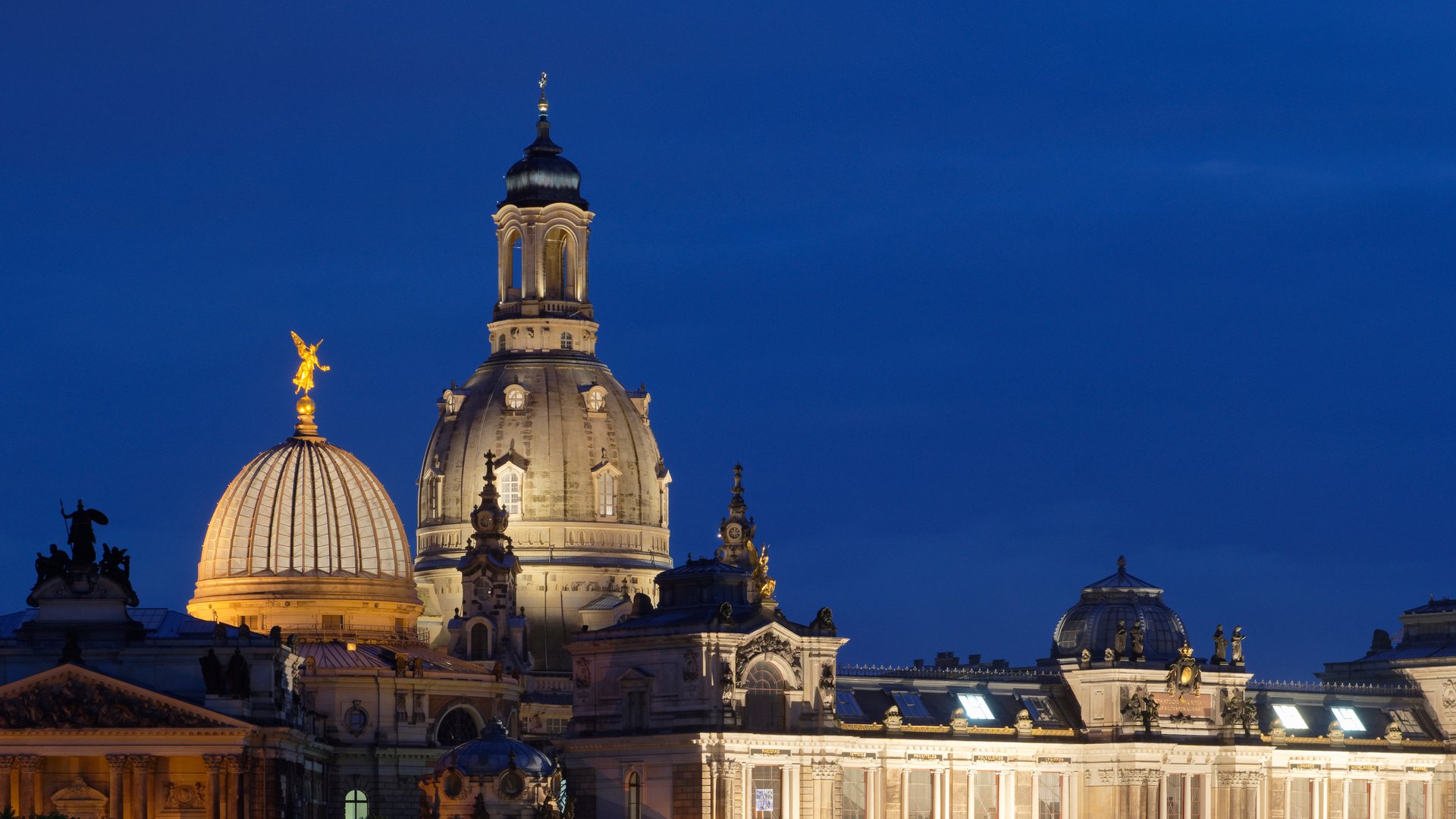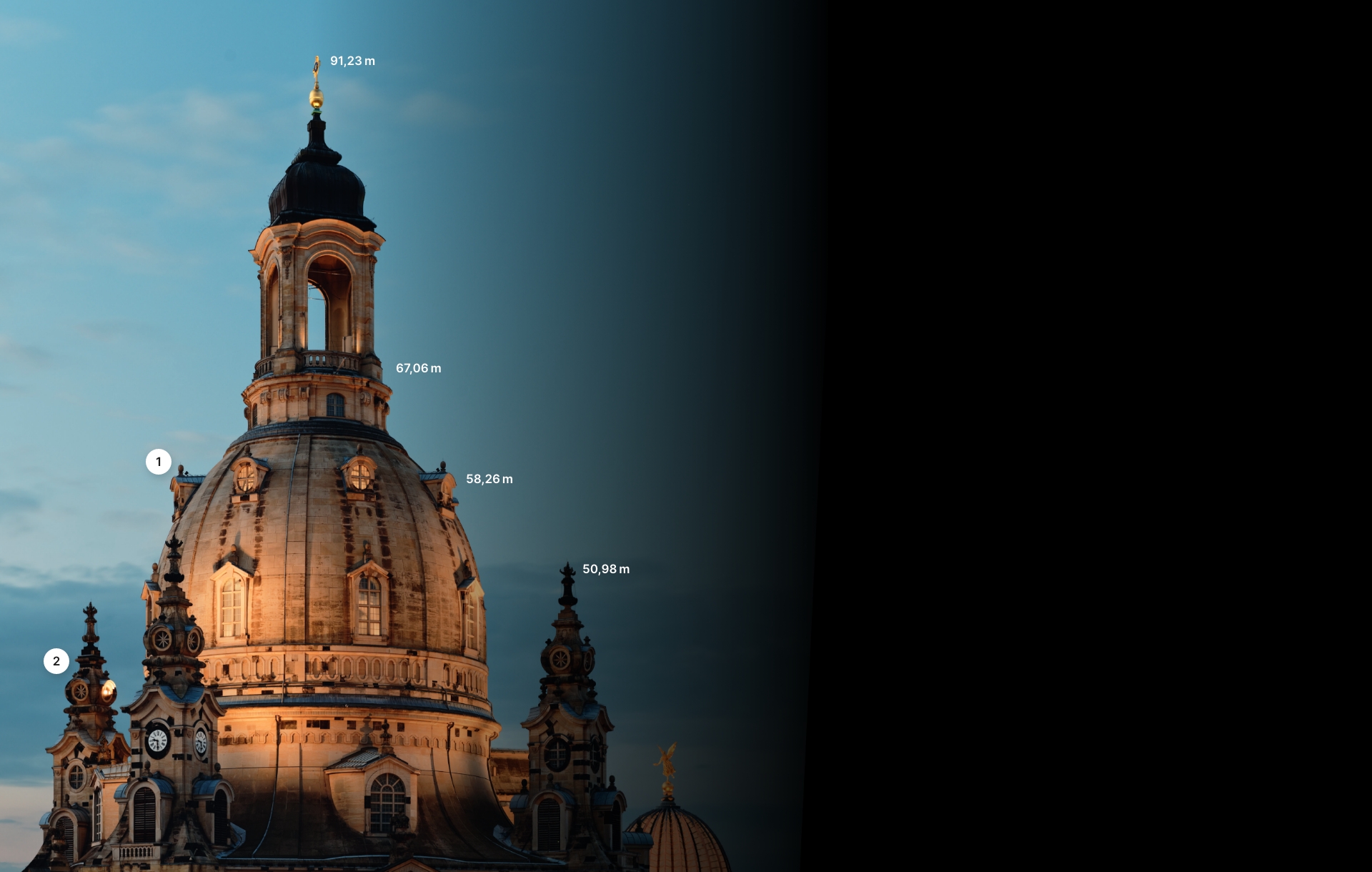
Delicate light staging of the “Stone Bell”
The history of Frauenkirche in Dresden is as turbulent as it is moving. Built in the 18th century, the burnt-out cathedral collapsed in February 1945 after the devastating bombing of the city. For 48 years, the mountain of rubble on Neumarkt was a memorial against war and destruction. After 1982, it became a symbol of the East German peace movement and non-violent protest. The baroque cupola structure was rebuilt between 1993 and 2005, re-utilising as much as possible of the original building materials. The project was funded with donations from around the world. The “new” Frauenkirche has been a symbol of peace and reconciliation since its completion. The sandstone church, built on a comparatively small area, has an octagonal shape in the lower part. Dark original stones, which were installed in their original place, are interspersed in the light façade. Old and new intertwined – the past as part of the future. The cupola itself is constructed entirely with sandstone. At a height of 24 metres and a diameter of 26 metres, it weighs more than 12,000 metric tonnes. The Frauenkirche owes its nickname “stone bell” to the unique shape of the dome and the curved cornice.

The illumination of the baroque cupola construction was a unique challenge. “The imaginary power for peace and reconciliation comes from within and radiates into the world”, says lighting designer Walter Bamberger, explaining the principle that the church should primarily shine from within. The light from within the structure is therefore also part of the exterior lighting and had to be integrated in the design accordingly.

From the specified position of the luminaires to the importance of lighting technology and the varying brightness of the façade elements: in Dresden, a special feat of façade illumination was achieved
➀ 77652 The compact floodlights with narrow beam light distribution were mounted and aligned on the cupola dormers by industrial climbers
➁ 77434 · 84528 Surface floodlights with a flat beam and performance floodlights with symmetrical wide beam light distribution provide the desired illumination of the cupola
The successful staging of Dresden’s Frauenkirche at night time required the consideration of a great number of parameters. The highly complex variety in the overall lighting design was addressed by seasoned specialists: lighting designer Walter Bamberger is a highly sought-after expert for special projects. Working closely with Thomas Gottschlich, chief architect of the church construction administration in Dresden, the illumination focused on highlighting the most meaningful historical details for which the Frauenkirche stands.
The lower part of the construction relies on standard urban illumination. It seems as if that light also illuminates the cupola. In reality, however, the outdoor lighting includes various types of BEGA floodlights.
The location-oriented concept does without direct façade illumination, because the church is meant to shine from within.”
Thomas Gottschlich, chief architect of the church construction administration in Dresden
The design included some great challenges, as the placement of the light sources were predefined for architectural design reasons. “The lighting is chosen so that the architecture and its elements are experienced in a very intricate and three-dimensional way”, says Walter Bamberger.
The lighting technology had to adapt and take into account the varying brightness of the façade on the different levels of luminaire placement. The originally intended result had to be achieved, despite the darker surface of the original stone material. “The aim was to create a similar luminance or more light directed to the right places”, explained the lighting designers. The end result is a special feat of façade illumination using floodlights:
“The outer hull of the cupola above the lantern neck up to the lantern itself has become an illuminated beacon in the cityscape.”
Lighting Designer Walter Bamberger
The actual brightness is very muted, as the entire idea is to convey the message that the light comes from within, explains Bamberger. When selecting the products, the quality of the luminaires and a very long lifespan were also important factors, in view of excessive follow-on costs. For those in charge of the budget, this is one of the hallmarks for the reliability of a premium manufacturer.
After all, the phenomenon that is the Frauenkirche also means industrial climbers were needed, as the light concept extended to very hard to reach positions at heights of more than 50 metres.

Highly reliable BEGA floodlights provide light at the four staircase turrets at a height of about 44 metres.

Our lighting practice of illumination with floodlights
Would you like to know more about lighting with floodlights? Benefit from our extensive wealth of experience. We have compiled numerous practical examples for you. Let yourself be inspired and discover possible solutions for your project with floodlights.








